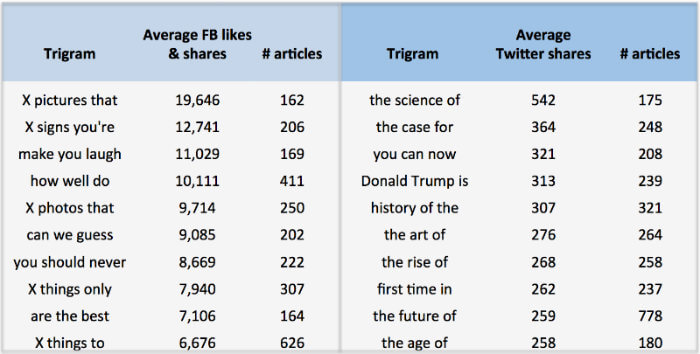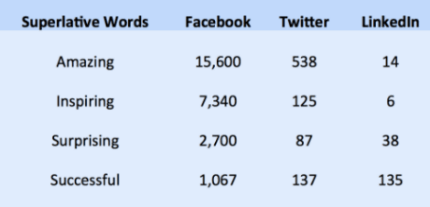
10 common phrases in viral headlines
By Sophia Skinbjerg | sophia.skinbjerg@ungapped.com
Ever wondered what is the secret sauce that makes some content go viral while other content is simply left behind to be forever lost on page 4 of Google? You’re not alone – finding out the secret ingredients that make a viral headline is a constant challenge for marketers the world over.
What does it mean to go viral?
Before we start looking at what viral headlines have in common, I think it’s important we try to get a sense of what it means to even go viral in the first place.
Surprisingly, I found it quite difficult to even find consistent definitions on views, shares or even stretches of time that qualify a piece a content as viral. And that’s probably because the definition itself keeps morphing and a regular basis. If you ask anyone what it means to be viral, most would say millions or billions of people would need to have seen a single piece of content. But in the last decade only a few videos have even come close to a billion views. That was until Gangnam Style was released.
In a period of just 160 days, Psy’s mega hit became the first ever YouTube video to reach 1 billion views (toppling Justin Bieber’s ‘Baby’). And this was recently beaten by Adele’s ‘Hello’ which accumulated over a billion views in just 87 days.
These examples are only just two instances where definitions, as we know them, have been changed forever and will one day (presumably in the near future) be changed again.
Related: 5 easy ways to increase viewer engagement on YouTube
Elements (not numbers) maketh headlines
So taking into consideration that there is no singular numerical definition of viral, we need to take a look at the different elements of a headline that make it viral. Buzz sumo have a fantastic breakdown on what it takes to make a viral headline which I recommend you read if you want to start making your own viral headlines. But as super quick summary, here are the 8 elements listed by Buzzsumo;
- Structure
- Content format
- Content type
- Topic
- Superlative or emotional words
- Trigrams
- Have a clear promise
- Tailor promotional content for each social network
The research from Buzzsumo
Buzzsumo examined the headlines of 1 million random articles from top publishers posted on social networks. By looking at the most common three-word phrases in the top shared pieces on social media, the researchers were able to pinpoint what headlines performed the best across both Facebook and Twitter. Take a look at the findings below:

Source: buzzsumo.com
What does this mean?
It’s interesting to see the difference in the most viral headlines on Facebook and Twitter because many would have predicted the data to be the same across the two social media sites. Around half of the viral headlines on Facebook turned out to be content that were list-based or ‘listicles’. Compare this to Twitter which saw the most viral headlines composed of phrases resembling more long-form content. For example, “the science of” or “the art of”.
Related: Millennials and B2B marketing
Superlatives can make or break a headline
The researchers also took a look at the performance of individual superlative words in the headlines of top publishers. Words like ‘amazing’, ‘incredible’ and ‘sensational’ are all examples of superlatives.
For the most common superlatives, Buzzsumo examined 10,000 articles that included one in the headline and determined average number of social shares across different social networks. Take a look at the top 4 below:

Source: buzzsumo.com
“Amazing” is the superlative that appears in the most popular article headlines on both Facebook and Twitter whereas “successful” is the word that appears most on viral LinkedIn posts. Even just this snippet of data shows what content is preferred by different audiences on different social networks.
Use these findings in your email strategy
Although these findings have been limited to social media, there are still applications for your own email strategy. The top three-word phrases on both Facebook and Twitter have enjoyed insanely high engagement rates so incorporating them into your own linked email content could certainly prove beneficial. As well, try using some of the top 4 superlatives in linked email content and see if your click-through rates enjoy a boost.